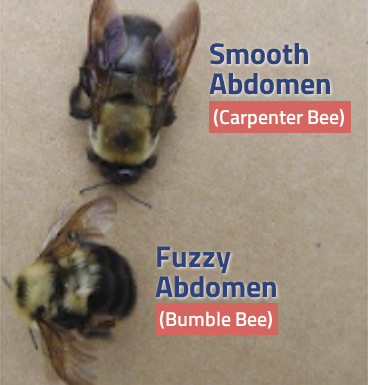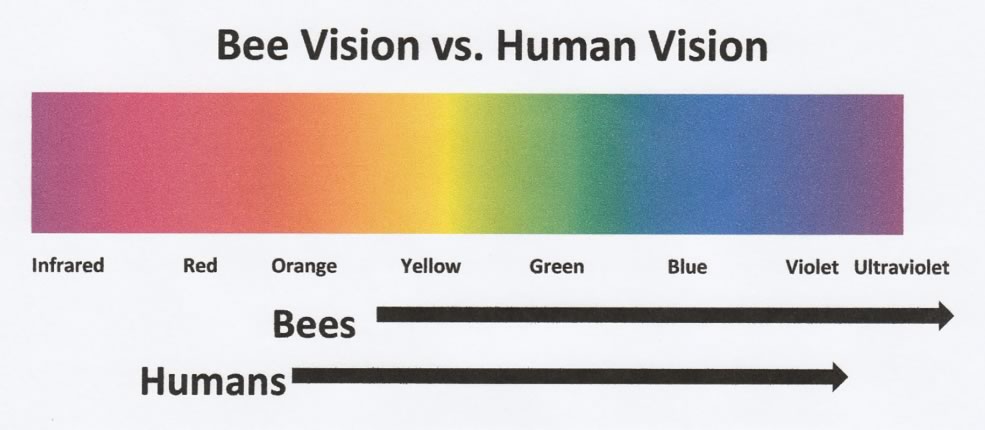Bumblebee Bonanza
- Moderate
- Not Messy
- 15 Minutes
- Outdoor
Observe Bumblebees in Action
Penn State entomologists visited Science-U Nature Camp and took the campers to the Penn State Arboretum to observe bumblebees in action. Campers learned how to be safe when watching bees fly about the flowers.
Using the campers’ tips as a guide, you can safely observe bees at home and learn what bumblebees do all day!
Watch the video on YouTube: https://youtu.be/g3bbEHXaT_Q
You Will Need
Good weather – warm, dry days are best
A good place outside to observe bees
Bee Observation Sheet
Something to write with
Note: Bee Observation Safety Tips
Children should always have adult supervision while observing insects.
DO NOT touch or disturb the bees. Most bees will not sting if you only observe them.
Do not collect bees due to safety reasons for both you and the bees. Close observation can be done without collection.
While observing bees, they might come to check you out, especially if you are wearing bright colors. Stay calm, if you don’t alarm them, they will just fly away.
Directions
- Print the Bee Observation Sheet (included in the Materials & Directions PDF) or handwrite your own observation sheet using the examples below.
- Find bumble or carpenter bees somewhere outside. Good places to look include on or around flowers and around the eaves of buildings. You can also locate them by listening for the buzzing sound they make. The best time to find these bees in the Northeastern United States runs from about April to September. It may vary based on where you live.
- Images of the two types of bees you are looking for. They are usually about 1 inch long.

- Sit and watch the bees for about 2 to 5 minutes.
- Record how many legs, antennae, and body segments one bee has. What colors do you see on the bee? What are they doing while you observe them?
- Watch the bees for the behaviors listed in the Bee Observation Chart and then count how many bees you observe completing each behavior. Remember to be respectful, and observe the bees from a distance.
- You may notice the bees are attracted to one type of flower more than another. Bees can see different colors than humans can, as demonstrated by this chart:

Experiment Extensions
- Try repeating the color count at different points throughout the summer. Different color flowers will bloom at different times in the summer, and the bees may change their preferred color.
Discovery Questions
Beginning the Experiment
- What do bees do all day?
- Each species of bee is different. Many native bees are solitary and do not live in a hive. Instead, they have their own holes, sometimes in the ground, sometimes in the wood on trees and houses. Most bees spend their days collecting pollen and nectar to eat or make honey from, digging their burrows, interacting with other bees, flying, grooming themselves, or a variety of other activities.
- What behaviors might you observe in the bees?
- Most of the bees you observe will be collecting pollen and nectar to eat or make honey from, digging their burrows, interacting with other bees, flying, grooming themselves, or a variety of other activities. These are typical daily activities for most bees.
- Where might you find the most bees?
- Most bees are going to be around flowers during the day. They need to collect pollen and nectar to eat or bring back to their hives to make into honey.
During the Experiment
- What are the bees doing?
- Answers will vary based on what the scientist observes.
- Do the bees prefer a certain color flower?
- Fill out the color observation chart and look at your results. Bees tend to be attracted to blues and purples, as those are the colors they can see best.
- Do the bees interact with one another?
- Answers will vary based on what the scientist observes.
After the Experiment
- What would the bees do in colder weather? How about if it was raining?
- Try observing them on a cold or rainy day! Most species of bees are not active in the rain or cooler weather.
- Which color flowers did the bees land on most often? Why?
- Answers will vary based on what the scientist observes. Bees tend to be attracted to blues and purples, as those are the colors they can see best.
- Which color flowers did the bees land on least often?
- Answers will vary based on what the scientist observes. Bees tend to land less on flowers that are red and orange because they cannot see these colors as well
- Want to take this experiment further?
- Try repeating the color count at different points throughout the summer. Different color flowers will bloom at different times in the summer, and the bees may change their preferred color.
How it works
Most species of bees are only active during the warmer times of the year, in the late Spring and Summer. During this time they are gathering pollen to bring back to their hives to feed themselves and the queen.
p>Some species of bees make honey but others eat pollen or nectar. You can observe bees in action, collecting pollen and nectar from flowers. There are many different species of bees that do this, including bumblebees, honey bees, wasps, and hornets. There are even some flies that look like bees!
Bees can see different colors than humans can, as demonstrated by this chart:

Key Words
- Pollen
- The very tiny grains produced by the stamens of a flower which usually appear as yellow dust
- Nectar
- A sweet liquid produced by plants and used by bees in making honey.
- Hive
- An above ground nest of bees.
- Queen Bee
- The largest bee in a hive who is in charge of laying eggs and running the hive.
- Pollen Basket
- A smooth area on the back legs of bees that is edged by a fringe of stiff hairs that helps the bees collect and transport pollen.
